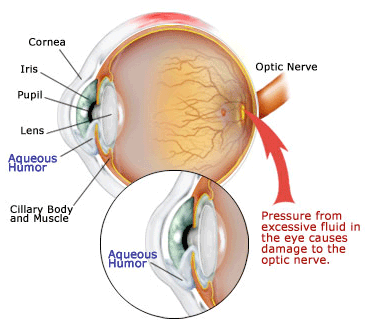| |
Glaucoma
 Glaucoma is a leading cause of a preventable blindness in the U.S. and is currently defined as a disease of the optic nerve (which “connects” eye to the brain) that causes characteristic changes in its appearance. This may lead over time to a peripheral vision loss. Glaucoma usually can be slowed down by adequate lowering of intraocular pressure (IOP). Glaucoma is a leading cause of a preventable blindness in the U.S. and is currently defined as a disease of the optic nerve (which “connects” eye to the brain) that causes characteristic changes in its appearance. This may lead over time to a peripheral vision loss. Glaucoma usually can be slowed down by adequate lowering of intraocular pressure (IOP).
Multiple varieties of glaucoma exist. The most common type often develops silently over many years without causing pain or other noticeable symptoms, thus many patients will not experience severe vision loss until the late in the disease.
Unfortunately, at the advanced stage the vision loss is not reversible.
People at higher risk include those who are over the age of 50, African-Americans, nearsighted, or who have a family history of glaucoma.
To detect glaucoma, your physician will test your visual acuity, eye pressure, and your peripheral vision. Regular eye exams help to monitor the changes in your eyesight, and to determine whether you are developing glaucoma. Once diagnosed, glaucoma can be controlled with prescription eye drops, yet at times laser or incisional surgery is necessary.
With an appropriate screening glaucoma can be identified early and its progress be arrested before significant effect on vision have occurred.
|
|